Astronomy, the study of celestial objects, has captivated human curiosity for centuries. As we gaze at the night sky, we can’t help but wonder how our ancient ancestors perceived the heavens above. Exploring the role of astronomy in ancient civilizations reveals a deep connection between celestial observations and the development of human societies. From the early beginnings of Mesopotamian and Egyptian cultures to the architectural planning, recording of the skies, and cultural practices, astronomy has permeated various aspects of ancient civilizations. Join us on a journey through time as we delve into the fascinating world of ancient astronomers and uncover the profound impact their knowledge had on their respective societies.
The Early Beginnings
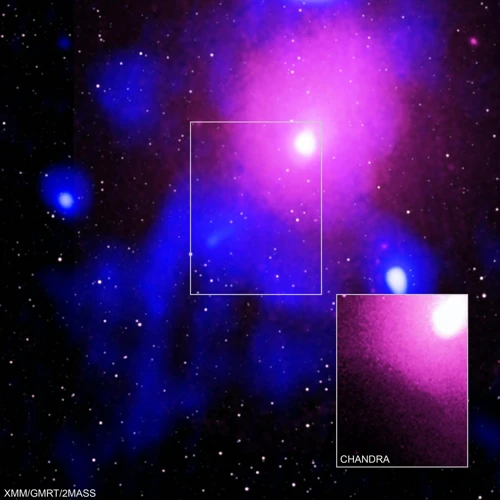
The early beginnings of humanity witnessed the emergence of ancient civilizations that cultivated a profound interest in astronomy. In Ancient Mesopotamia, the Sumerians meticulously studied the night sky, developing the first known astronomical observations and creating a complex system of divination and astrology. Meanwhile, in Ancient Egypt, the Egyptians closely linked their spiritual beliefs with astronomical events, using the movements of the stars and planets to guide their religious practices and the construction of their awe-inspiring pyramids. In Ancient China, celestial observations played a crucial role in the development of the Chinese calendar and agricultural practices, underscoring the significance of astronomy for both practical and cultural purposes. The early civilizations’ fascination with the heavens laid the foundation for a rich tradition of astronomical knowledge and a deeper understanding of the world around them.
Ancient Mesopotamia
Ancient Mesopotamia, located in the fertile lands between the Tigris and Euphrates rivers, was home to one of the earliest civilizations in the world. The Mesopotamians were keen observers of the night sky, and their astronomical knowledge played a crucial role in their daily lives. Here are some key aspects of astronomy in ancient Mesopotamia:
1. Cuneiform Tablets: The Mesopotamians left behind an extensive collection of cuneiform tablets that recorded astronomical observations and predictions. These tablets include records of eclipses, planetary positions, and celestial events, providing valuable insights into their understanding of the cosmos.
2. Divination and Astrology: Mesopotamians believed that celestial phenomena held significance in interpreting the will of the gods and predicting future events. They developed intricate systems of divination and astrology, looking to the movements of celestial bodies for guidance. This connection between astronomy and astrology can be seen in their zodiacal system, which influenced later astrological traditions.
3. Lunar Calendar: The Mesopotamians developed a lunar calendar based on the cycles of the moon. This calendar consisted of twelve lunar months, with each month beginning at the first sighting of the new moon. It was used for religious rituals, agriculture, and administrative purposes.
4. Babylonian Mathematics: Mesopotamian astronomers made significant advancements in mathematics, which were essential for their astronomical calculations. They developed numerical systems and techniques for precise measurements and geometrical calculations that allowed them to track planetary movements and celestial events.
5. Ziggurats: Ziggurats were impressive temple towers built by the Mesopotamians, and they likely served astronomical purposes as well. It is believed that ziggurats were constructed with astronomical alignments in mind, serving as observation platforms for studying the stars and planets.
6. Astrological Reports: Mesopotamian astrologers produced detailed reports that connected celestial events with human affairs. These reports, known as “Enuma Anu Enlil,” provided guidance on matters such as agriculture, warfare, and personal life based on astrological interpretations.
The astronomical knowledge of ancient Mesopotamia laid the groundwork for future civilizations and inspired the development of other ancient astronomical traditions. Archaeological discoveries continue to shed light on the importance of astronomy in Mesopotamian society and the enduring legacy of their celestial observations. (source: source)
Ancient Egypt
In Ancient Egypt, astronomy held immense importance in both their religious and societal practices. The Egyptians believed that the movements of celestial bodies were connected to the lives of their pharaohs and the gods they worshipped. Here are some key aspects of astronomy in Ancient Egypt:
1. Star Alignment and Constellations: The Egyptians closely monitored the positions of stars and constellations to guide their agricultural practices and determine the flooding of the Nile River. The appearance of certain stars, such as Sirius, served as an indicator of the approaching inundation, which was crucial for their agricultural calendar.
2. Solar Observation: The Egyptia ancients had a deep reverence for the sun god, Ra. They carefully tracked the sun’s movements and created structures, such as the Abu Simbel temples, designed to align with the solstices and equinoxes. These alignments showcased their architectural mastery and demonstrated their understanding of celestial events.
3. Planetary Observations: The Egyptians observed the movements of planets like Venus and believed that they represented various deities. They associated the motion and behaviors of these planets with the actions and will of the gods, which influenced their religious rituals and offerings.
4. Divination and Astrology: The Egyptians integrated astronomy into their divination practices and astrology. They believed that celestial events could provide insights into the future and used their understanding of the stars and planets to make important decisions in various aspects of life, including medicine, agriculture, and governance.
The astronomical knowledge of Ancient Egypt continues to fascinate researchers and historians today. By studying the ancient texts, temple inscriptions, and architectural alignments, we gain valuable insights into their deep appreciation for the heavens and the profound influence astronomy had on their culture.
Ancient China
In Ancient China, astronomy played a significant role in shaping the culture and society of the time. The ancient Chinese observed the celestial bodies with great precision and developed a deep understanding of astronomical phenomena. Here are some key aspects of astronomy in Ancient China:
1. Chinese Calendar: The Chinese calendar was closely tied to astronomy. The observation of celestial events, such as the movement of the sun, moon, and stars, was used to determine the dates for agricultural activities, festivals, and rituals. The calendar followed a lunar-solar system, combining lunar phases with solar cycles to synchronize with the agricultural seasons.
2. Celestial Mapping: The ancient Chinese created detailed star charts and celestial maps to aid in their astronomical observations. One notable example is the Dunhuang Star Chart, discovered in the Mogao Caves in northwestern China. This chart, dating back to the Tang Dynasty, depicts over 1,300 stars, including the five major planets known at the time.
3. Ancient Observatories: The Chinese constructed observatories to study the heavens and track celestial events. One well-known observatory is the Beijing Ancient Observatory, which dates back to the Ming Dynasty. It consisted of a complex set of instruments used to observe and record the positions of celestial bodies.
4. Comets and Supernovae: Ancient Chinese astronomers meticulously recorded sightings of comets and supernovae. These astronomical events were believed to hold great significance and were often interpreted as omens. The records of these sightings have been invaluable for modern astronomers in understanding the history of celestial phenomena.
5. Astrological Practices: Astronomy in Ancient China was closely intertwined with astrology. The positions of celestial bodies were believed to influence human affairs and personalities. Astrologers made use of intricate systems, such as the Four Pillars of Destiny, to make predictions based on astronomical observations.
The astronomical knowledge and practices of Ancient China have left a lasting impact on the culture and traditions of the Chinese people. Today, modern astronomers continue to study and unravel the rich astronomical heritage of this ancient civilization.
Astronomy as a Tool
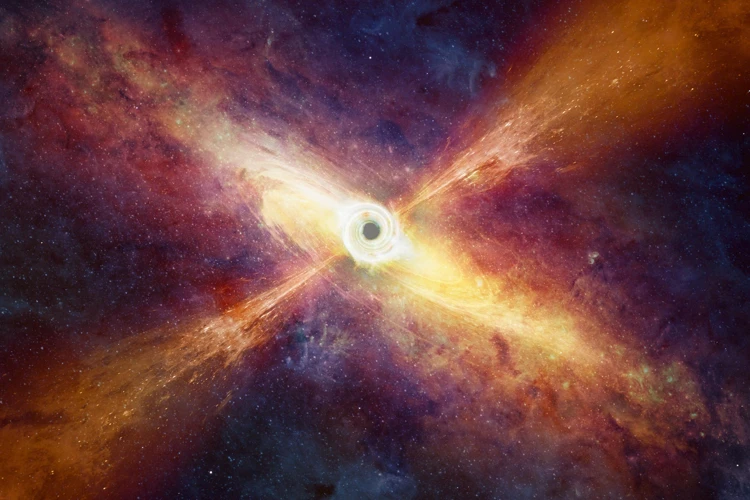
Astronomy served as a powerful tool for ancient civilizations, playing a crucial role in their understanding of the natural world and guiding various aspects of their lives. One of the key applications of astronomy was in agriculture and seasonal cycles. By studying the movement of celestial bodies, such as the sun and stars, ancient societies like the Mayans (insert internal link to /mysterious-astronomical-knowledge-mayans/) were able to develop sophisticated calendars that guided their farming activities and helped predict weather patterns. Additionally, astronomy intertwined with religion and mythology, shaping belief systems and rituals. The alignment of temples and sacred structures with celestial events, as seen in places like Stonehenge and the Great Pyramids of Giza, reflected the spiritual significance attributed to astronomical phenomena (insert internal link to /investigating-ancient-observatories-astronomical-significance/). Astronomy, therefore, served as a powerful tool that enabled ancient civilizations to navigate their physical and spiritual worlds with a profound sense of connection to the cosmos.
Agriculture and Seasonal Cycles
Ancient civilizations recognized the vital connection between astronomy and agriculture, as they understood that the cycles of the stars and planets were closely linked to the changing seasons and agricultural productivity. In Mesopotamia, the Babylonians developed an intricate system of celestial observations to determine the optimal timing for planting and harvesting crops. They meticulously recorded the movements of celestial bodies, including the Sun, Moon, and stars, to create agricultural calendars that guided their farming activities. Similarly, in Ancient Egypt, the Egyptians closely monitored the annual flooding of the Nile River, which was essential for their agricultural practices. They used celestial observations, particularly the rising of the star Sirius, to predict the arrival of the floods and to plan their planting schedules accordingly. In China, the ancient Chinese developed an agricultural calendar known as the Xia Calendar, which was based on the movements of the Moon and stars. This calendar helped farmers determine the optimal times for planting, irrigation, and harvesting. The understanding of astronomy’s role in agriculture allowed these ancient civilizations to optimize their crop yields and ensure the survival and prosperity of their communities.
Religion and Mythology
Religion and mythology played a significant role in ancient civilizations, and their connection with astronomy was no exception. In Ancient Mesopotamia, the Mesopotamians worshipped a pantheon of gods and believed that their actions were reflected in celestial events. They associated various constellations and planets with their deities, forming a celestial hierarchy. For example, the planet Venus was associated with the goddess Ishtar, while the constellation Orion represented the hero Gilgamesh. The Mesopotamians believed that celestial phenomena, such as eclipses or comet appearances, were messages from the gods or signs of impending events.
Similarly, in Ancient Egypt, the Egyptians linked their religious beliefs with celestial bodies. The Nile River, a vital lifeline, was thought to be influenced by the movement of the stars and the flooding of the river was considered crucial for agricultural prosperity. The night sky held great significance for the Egyptians, with certain stars and constellations being associated with their gods and goddesses. The star Sirius, known as Sopdet or the Dog Star, was particularly revered and its rising in the sky heralded the flooding of the Nile.
In Ancient China, astronomical observations were closely entwined with religious practices and imperial governance. The Chinese identified five major visible planets, which were associated with the five elements and the ruling deities. The alignment of celestial bodies played a role in determining the legitimacy of rulers, as it was believed that the harmony of the heavens reflected the harmony on Earth. The emperor, known as the “Son of Heaven,” was seen as the intermediary between the celestial realm and the mortal world, and his actions were believed to have direct influence on the cosmic order.
Across these ancient civilizations, religion and mythology intertwined with astronomy, forming a complex belief system. The celestial realm was not only seen as a source of divine power but also influenced the actions of humans and the natural world. The connection between religion, mythology, and astronomy shaped the cultures and contributed to the development of rituals, calendars, and the understanding of the universe as a whole.
Astronomy in Architectural and Urban Planning
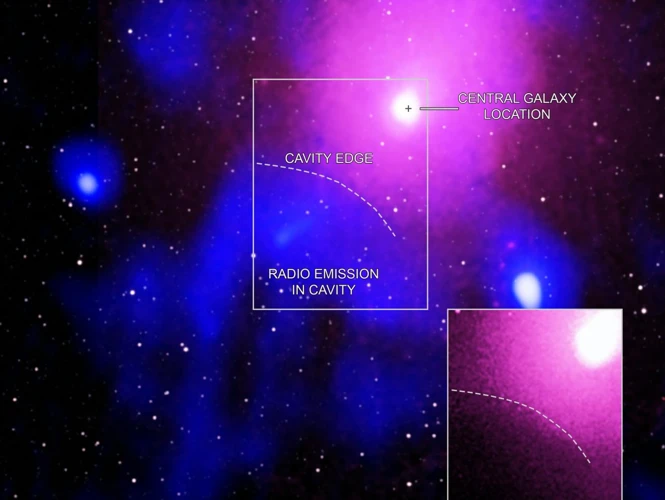
Astronomy in ancient civilizations played a pivotal role in architectural and urban planning, shaping the design and layout of cities and structures. Alignment of Structures with Celestial Events was a crucial consideration for many societies. In ancient Egypt, the Great Sphinx of Giza is believed to be aligned with the rising sun on the spring equinox, symbolizing rebirth and renewal. Similarly, the Mayans in Central America designed their pyramids and temples to align with celestial events, such as the solstices and equinoxes, serving as markers for agricultural cycles and religious ceremonies. The precise positioning of these structures showcased the intimate relationship between architecture, cosmology, and the passage of time. Additionally, the construction of megalithic sites, such as Stonehenge in England, displayed meticulous astronomical alignments, possibly serving as astronomical calendars or ceremonial gathering places. The careful integration of celestial observations into urban planning highlights the significance of astronomy as a guiding principle in ancient societies.
Alignment of Structures with Celestial Events
The alignment of structures with celestial events was a common practice in various ancient civilizations. It is a testament to the profound influence that astronomy had on architectural and urban planning. In Ancient Mesopotamia, the city of Babylon had its ziggurat, the Etemenanki, intentionally aligned with the cardinal points and celestial bodies. These alignments were believed to establish a connection between the earthly realm and the heavens above. Similarly, in Ancient Egypt, the Great Pyramids of Giza were meticulously oriented to align with specific celestial phenomena, such as the north pole star and the rising of the sun on particular dates. This alignment served as a symbolic representation of the pharaoh’s connection to the gods and the afterlife. In Ancient China, the construction of important ceremonial and sacrificial sites also took into account celestial alignments. For instance, the Temple of Heaven in Beijing was designed and laid out based on cosmological principles, aligning with the cardinal directions and significant astronomical events. The careful alignment of these structures with celestial events showcases the profound reverence ancient civilizations held for the night sky and their belief in the interconnectedness of the cosmos and the earthly realm. The melding of astronomy and architecture produced awe-inspiring structures embedded with celestial significance that have endured throughout the ages.
Construction of Megalithic Sites
The construction of megalithic sites stands as a testament to the advanced astronomical knowledge possessed by ancient civilizations. These massive stone structures, such as Stonehenge in England and the Great Pyramids of Giza in Egypt, exhibit remarkable alignments with celestial events. The precise positioning of these megaliths demonstrates the meticulous understanding of astronomical phenomena by the ancient builders. Researchers have discovered that some megalithic sites were constructed to align with the movement of the sun, moon, and stars, indicating the civilization’s profound reverence for celestial bodies. These alignments not only served practical purposes, such as marking important dates in agricultural and seasonal cycles, but also held significant cultural and spiritual meaning. The megalithic sites symbolized the connection between the earthly realm and the celestial realm, emphasizing the harmony between humans and the cosmos. Studying the construction of megalithic sites provides invaluable insights into the astronomical sophistication and cultural beliefs of ancient civilizations. It serves as a remarkable testament to their ingenuity and reverence for the celestial world.
Recording the Skies

Recording the skies was a crucial endeavor undertaken by ancient civilizations to preserve their astronomical knowledge for future generations. One remarkable method employed by these early astronomers was the creation of ancient star maps, which depicted constellations and celestial bodies with astonishing accuracy. These star maps, etched onto various mediums such as stone or papyrus, served as invaluable references for navigating the night sky and understanding the patterns and movements of the stars. Ancient astronomers also constructed astronomical observatories to meticulously observe the heavens. These structures had precise alignments and features that facilitated monitoring celestial events, allowing astronomers to record and study phenomena such as solstices, equinoxes, and the motions of planets. The combination of star maps and astronomical observatories testifies to the meticulousness and dedication of ancient civilizations in comprehending the complexities of the cosmos.
Ancient Star Maps
Ancient star maps provide invaluable insights into how ancient civilizations perceived and recorded the positions of celestial bodies. These maps were created by carefully observing the night sky and recording the positions of stars and constellations. One remarkable example is the Nebra Sky Disk, an ancient bronze disk found in Germany that dates back to around 1600 BCE. The disk depicts a crescent moon, a cluster of stars representing the Pleiades, and a circle believed to represent the sun or full moon. It is widely considered one of the oldest known representations of the night sky. Similarly, the Dendera Zodiac in Ancient Egypt is a renowned star map found on the ceiling of the Hathor temple. It showcases constellations and astronomical symbols, serving as a visual representation of the stars as they were understood in ancient times. These ancient star maps not only demonstrate the interest and understanding of celestial patterns but also shed light on early astronomical practices and beliefs.
Astronomical Observatories
Astronomical observatories played a pivotal role in ancient civilizations, serving as sophisticated tools for studying the night sky and making accurate observations of celestial bodies. These observatories were specifically designed with astronomical precision, incorporating architectural features that allowed for precise alignments and measurements. One notable example is the Chichén Itzá observatory in Mexico, which was built by the Mayans. This circular structure, known as the “Caracol,” featured narrow slits and windows strategically positioned to observe important astronomical events such as solstices and equinoxes. The Mayans also utilized a network of observatories known as “alignment temples,” where they could observe the movement of Venus and other celestial bodies. Another remarkable observatory can be found in Gaocheng, China, which dates back to the Tang Dynasty. This ancient observatory consisted of a massive platform with numerous observation instruments, including armillary spheres and gnomons, used for tracking the movements of the sun, moon, and stars. These observatories not only served scientific purposes but also held cultural significance, as ancient civilizations incorporated astronomical knowledge into their religious and agricultural practices. The existence of these observatories reveals the advanced understanding and appreciation of astronomy in ancient times.
Astrology and Divination
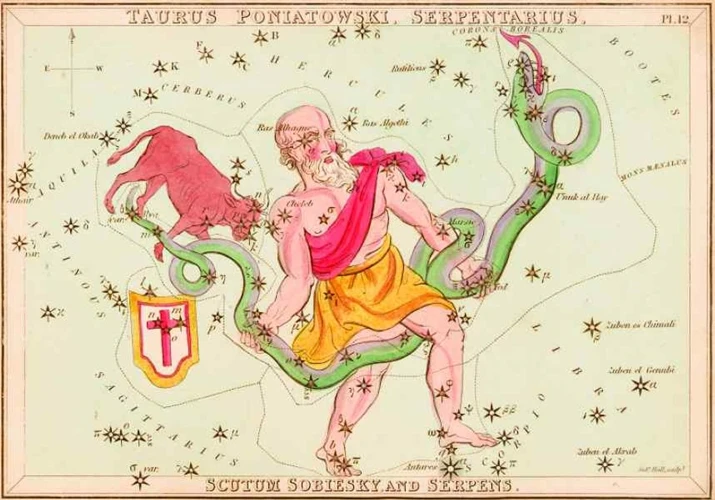
Astrology and divination were integral practices in ancient civilizations, heavily influenced by celestial observations.
- Ancient Mesopotamia: The Mesopotamians believed that celestial events had a direct impact on human affairs. They developed a complex system of astrology, associating specific celestial bodies with various aspects of life. Astrologers interpreted these celestial positions and movements to make predictions about the future and offer guidance to both individuals and rulers.
- Ancient Egypt: In Ancient Egypt, the alignment of the stars and the movement of the planets held immense significance. The Egyptians practiced astrology to determine the most auspicious times for religious ceremonies and even everyday activities such as farming or marriage. Astrologers also played a crucial role in advising the pharaohs on matters of state and making important decisions.
- Ancient China: Chinese astrology, known as “Zhou Yi,” focused on the cyclical patterns of the celestial bodies. The ancient Chinese believed that these cyclical patterns affected the fate and personality traits of individuals. They created the Chinese zodiac, a system that assigned animals to each year in a twelve-year cycle, based on the position of Jupiter. This astrological system is still widely used today and has fascinated people for centuries.
These ancient civilizations relied on astrology and divination to gain insight into the future, understand their place in the world, and make important decisions. The knowledge and practices developed during this time laid the foundation for later developments in astrology and continue to impact our understanding of celestial phenomena and their influence on human lives.
Astronomical Instruments and Technologies
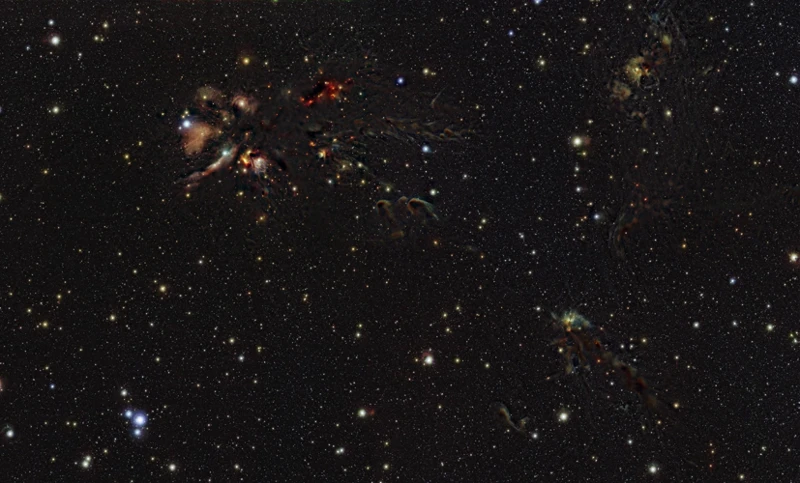
Astronomy in ancient civilizations spurred the development of various astronomical instruments and technologies that enhanced celestial observations. One notable invention was the ancient astrolabe, a sophisticated instrument used for measuring the altitude and azimuth of celestial objects. This device allowed astronomers to determine the position of stars, plan the construction of buildings aligned with the cosmos, and navigate the vast seas. Additionally, ancient cultures devised ingenious tools for measuring time, including sundials and water clocks. These timekeeping devices enabled precise tracking of celestial movements and played a crucial role in agricultural planning, religious rituals, and societal organization. The innovative astronomical instruments and technologies developed by ancient civilizations demonstrate their remarkable dedication to understanding the cosmos and utilizing celestial knowledge in practical and cultural contexts.
Ancient Astrolabes
Ancient astrolabes were intricate and sophisticated astronomical instruments used in various ancient civilizations. These devices were utilized for a range of purposes, including celestial navigation, timekeeping, and predicting astronomical events. The astrolabe consisted of a circular disk with engraved markings representing the positions of celestial bodies. It featured an adjustable sighting device called an alidade that allowed users to measure the angles between celestial objects and the horizon. By aligning the astrolabe with specific stars or planets, ancient astronomers could determine the time of day or night, calculate the altitude of celestial bodies, and even predict the movement of celestial bodies over time. The astrolabe was a testament to the advanced mathematical and astronomical knowledge of ancient civilizations, and its use greatly influenced navigation, astrology, and scientific exploration for centuries to come. Some well-known examples of ancient astrolabes include the Antikythera Mechanism found in Greece, which had intricate gears and accurately predicted the positions of celestial bodies, and the Islamic astrolabes of the Middle Ages, which incorporated innovations and refinements to the design. Ancient astrolabes served as important tools in unlocking the mysteries of the cosmos and played a significant role in shaping our understanding of astronomy.
Inventions for Measuring Time
Inventions for Measuring Time played a significant role in the development of ancient civilizations’ astronomical practices. One notable device utilized by several cultures was the water clock, also known as the clepsydra. In Ancient Egypt, for example, water clocks were used to measure time during the day by monitoring the flow of water from one container to another. These clocks were calibrated to correspond with the movement of celestial bodies, allowing for the tracking of hours and establishing a connection between timekeeping and astronomical events.
Another innovation in time measurement was the sundial, which made use of the Sun’s position in the sky to estimate the time. Ancient civilizations such as the Greeks and Romans constructed sundials with intricately designed markings that aligned with the Sun’s movement throughout the day. By casting a shadow onto these markings, individuals could determine the approximate time. The sundial demonstrated the close relationship between astronomy and timekeeping, as the positions of the shadow directly reflected the celestial movements.
Additionally, the invention of mechanical clocks during the medieval period marked a significant advancement in time measurement. These clocks utilized various mechanisms, such as weighted pendulums and escapements, to regulate the passage of time. Although mechanical clocks were a more recent development compared to water clocks and sundials, they were crucial in standardizing timekeeping and further integrating astronomy into daily life.
The inventions and advancements in measuring time underline the deep connection between astronomy and the human concept of time. From water clocks and sundials to mechanical clocks, these devices enabled ancient civilizations to align their activities with celestial events, ensuring the synchronization of their daily routines and agricultural practices with the movements of the stars and planets.
Astronomy in Cultural Practices and Art
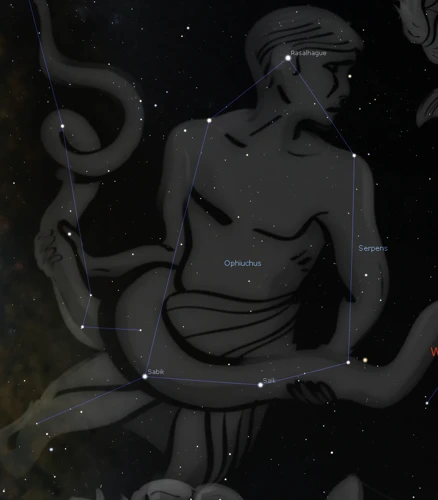
Astronomy played a significant role in the cultural practices and art of ancient civilizations. The celestial bodies, such as the Sun, Moon, and stars, were not only sources of fascination but also deeply intertwined with religious and mythological beliefs. In their artworks, ancient civilizations depicted celestial bodies in hieroglyphs, sculptures, and paintings, symbolizing their connection to the divine. The alignment of celestial events with architectural structures and ancient rituals showcased the profound influence of astronomy on the cultural practices of these societies. For instance, the Mayans, known for their advanced astronomical knowledge, created intricate calendars based on celestial observations, which guided their religious ceremonies and agricultural practices. The harmony between astronomy and cultural expressions highlights the reverence and awe ancient civilizations held for the heavens above, leaving a lasting impact on their art and cultural heritage.
Depictions of Celestial Bodies in Artworks
In the realm of ancient art, the depiction of celestial bodies held great significance and symbolism. Artists from various ancient civilizations incorporated representations of celestial bodies such as the sun, moon, and stars into their artworks. These celestial depictions were not merely aesthetic embellishments but carried deeper cultural and religious meanings. For example, in Ancient Egyptian art, the sun was often portrayed as the god Ra, symbolizing power, divinity, and the cycle of life. The moon, on the other hand, represented the goddess Isis, associated with femininity and fertility. Meanwhile, in Ancient Mesopotamian art, celestial bodies like the moon and stars were associated with deities and their celestial realm, reflecting the belief in a cosmic order and the influence of heavenly bodies on human affairs. The intricate artworks of the Maya civilization also showcased celestial bodies, highlighting their advanced understanding of astronomy and astrological interpretations. By incorporating celestial bodies into their art, ancient civilizations demonstrated their reverence for the cosmos and their desire to connect with the celestial realm. These celestial depictions in ancient artworks provide us with valuable insights into the importance of astronomy in shaping cultural beliefs and artistic expressions.
Astronomical Alignments in Ancient Rituals
Astronomical alignments played a significant role in ancient rituals and ceremonies across various civilizations. These alignments were carefully observed and incorporated into the design and layout of sacred structures and ceremonial sites. In Ancient Egypt, for example, the Great Sphinx at Giza is believed to have been aligned with the rising sun on the Spring Equinox, symbolizing the renewal of life and the agricultural cycle. Additionally, the alignment of the temple of Abu Simbel with the sunrise on King Ramses II’s birthday highlights the importance of celestial events in honoring and legitimizing the pharaoh’s divine rule. Similarly, in Ancient Maya culture, the architecture of temples and pyramids often aligned with astronomical events such as solstices and equinoxes. The alignment of these structures demonstrated the Mayans’ deep connection with celestial bodies and their belief in the cyclical nature of time and creation. These astronomical alignments served as a way to bridge the earthly and divine realms, infusing their rituals with cosmic significance and spiritual power. The precise calculations and alignments showcase the advanced astronomical knowledge possessed by these ancient civilizations, contributing to our understanding of their belief systems and cultural practices.
Legacy and Influence
The legacy and influence of ancient astronomy can be felt even today, as the knowledge and discoveries of these early civilizations continue to shape our understanding of the universe. The ancient astronomical knowledge passed down through generations served as the basis for subsequent scientific advancements in astronomy, laying the groundwork for modern theories and observations. From the precise calculations of celestial movements in ancient Mesopotamia to the intricate star maps of the Mayans, the wisdom of these ancient astronomers still holds value in the present day. The fascination with ancient astronomy has sparked a renewed interest among scholars and researchers, leading to modern understanding and studies that seek to unravel the intricacies and mysteries of the cosmos. By delving into the rich history of ancient civilizations and their connection to the stars, we can appreciate the enduring legacy of early astronomers and the profound impact their knowledge has had on our collective understanding of the universe.
Ancient Astronomical Knowledge Passed through Generations
Ancient astronomical knowledge was not lost with the passage of time but rather passed down through generations, ensuring its preservation and continued significance. In Ancient Mesopotamia, the accumulated knowledge of celestial observations was engraved on clay tablets, keeping records of astronomical events and predictions of eclipses that guided future generations. These tablets were meticulously studied and expanded upon by astronomers and scholars, contributing to the advancement of astronomical understanding. Similarly, in Ancient Egypt, the priesthood played a crucial role in perpetuating astronomical knowledge through oral traditions and the education of new initiates within the temples. They passed down the understanding of celestial movements, the connection between stars and gods, and the significance of specific celestial events in religious festivals and rituals. The Chinese also recognized the importance of transmitting astronomical knowledge through generations. The ancient Chinese texts, such as the “Classic of Mountains and Seas” and the “Book of Documents,” contained astronomical observations and served as educational tools for future generations. This continuous transmission of knowledge ensured that the ancient wisdom of the skies was not lost, and it laid the foundation for the development of astronomy in later civilizations.
Modern Understanding and Studies
Modern understanding and studies of ancient astronomy have brought new insights into the practices and knowledge of our ancestors. Through the use of advanced technology and scientific methods, researchers have been able to analyze ancient astronomical texts, artifacts, and structures to unravel the mysteries of the past. Scholars have deciphered ancient star maps, such as the Antikythera Mechanism, a complex ancient Greek device, which demonstrated a remarkable understanding of celestial mechanics and eclipses. Additionally, the discovery and excavation of ancient observatories, like the Chankillo observatory in Peru or the Caracol in Belize, have shed light on the astronomical significance of these structures and how ancient civilizations observed and measured celestial events. The interplay between ancient astronomy, astrology, and cosmology has been extensively studied, revealing the intricate connections between celestial observations and cultural beliefs. These findings have not only enhanced our understanding of the scientific achievements of ancient civilizations but have also provided valuable insights into the cultural, social, and religious aspects of their societies. With ongoing research and technological advancements, modern studies continue to deepen our understanding of the role of astronomy in shaping our ancient past.
Conclusion
In conclusion, the role of astronomy in ancient civilizations had a profound and lasting impact on the development of human societies. The early civilizations of Mesopotamia, Egypt, and China recognized the importance of celestial observations and integrated them into various aspects of their cultures. Astronomy served as a tool for agriculture and seasonal cycles, enabling civilizations to understand the rhythms of the natural world and ensure the success of their crops. It also played a significant role in religion and mythology, shaping the beliefs and practices of ancient civilizations, and providing a framework for understanding the cosmos. The architectural and urban planning of these civilizations were often aligned with celestial events, showcasing the reverence and recognition of the celestial bodies. Through the creation of ancient star maps and astronomical observatories, ancient astronomers recorded and studied the skies, leaving behind a legacy of astronomical knowledge. The integration of astronomy into cultural practices and art further demonstrates the deep connection between ancient civilizations and the cosmos. The knowledge and understanding gained in ancient times have trickled down through generations, contributing to the modern understanding and studies of astronomy. Overall, the study of astronomy in ancient civilizations serves as a testament to the enduring human fascination with the heavens and its profound influence on our collective history and culture.
Frequently Asked Questions
What is the importance of astronomy in ancient civilizations?
Astronomy played a crucial role in ancient civilizations as it influenced various aspects of their lives such as agriculture, religion, urban planning, and cultural practices. It provided a framework for understanding the celestial bodies and their impact on the world.
How did ancient civilizations record the skies?
Ancient civilizations recorded the skies through various means, such as creating star maps and constructing astronomical observatories. These records helped them track celestial events, make predictions, and understand the patterns and movements of celestial bodies.
Did ancient civilizations use astronomy for religious purposes?
Absolutely! Ancient civilizations integrated astronomy into their religious practices. They believed that celestial events and the positions of stars and planets held spiritual significance, influencing rituals, ceremonies, and even the construction of sacred sites.
Were ancient civilizations aware of the connection between astronomy and agriculture?
Yes, ancient civilizations like the Sumerians, Egyptians, and Chinese recognized the connection between celestial events and agriculture. They used astronomical observations to determine the timing of planting and harvest seasons, ensuring successful crop yields.
How did ancient civilizations use astronomy in architectural planning?
Ancient civilizations aligned structures such as temples, pyramids, or tombs with celestial events like solstices or equinoxes. This alignment demonstrated their advanced knowledge of astronomy and connected their architecture with the cosmic forces they believed in.
What is the relationship between astronomy and astrology in ancient times?
In ancient times, astronomy and astrology were closely intertwined. While astronomy focused on the scientific study of celestial objects, astrology sought to interpret their influence on human lives and events. They both originated from the same observations of the heavens.
What were some of the ancient astronomical instruments used?
Ancient civilizations developed innovative instruments for studying the stars. For example, the astrolabe was used to determine the positions of celestial objects, while inventions like sundials and water clocks helped measure time and track celestial movements.
How did ancient civilizations depict celestial bodies in their artworks?
Ancient civilizations incorporated depictions of celestial bodies in their artworks, showcasing their reverence for the heavens. Celestial objects like the sun, moon, and stars were often portrayed in religious and mythological scenes, symbolizing cosmic power and divinity.
What inspired ancient civilizations to explore astronomy?
Ancient civilizations were inspired to explore astronomy by their natural curiosity, reliance on the celestial bodies for practical purposes, and their belief in the spiritual and cosmic significance of the heavens. They sought to understand their place in the universe.
How has ancient astronomical knowledge influenced modern understanding?
Ancient astronomical knowledge has significantly influenced modern understanding. From the development of calendars to the exploration of deep space, ancient observations and discoveries have laid the foundation for scientific advancements in astronomy and continue to inspire further exploration.








